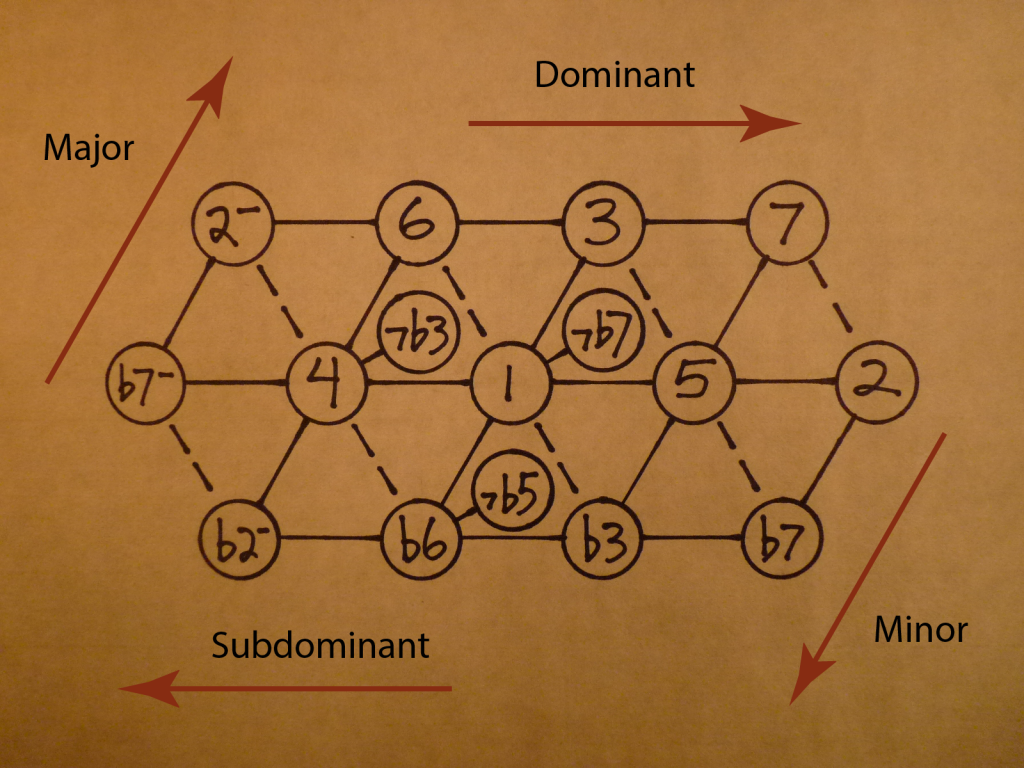The Compass Points
There are two basic directions on the lattice: multiplication and division.
If I start with a note, and then multiply it by 3, or 5, or 7, I will get a harmony note with overtonal energy. Such a note is in the natural overtone series of the original note.
Overtonal energy is stable, restful, it belongs where it is and wouldn’t mind staying there.
If I divide by 3, 5 or 7, I get a completely different kind of note. I call this division energy “reciprocal,” after W.A. Mathieu’s suggestion in his amazing book Harmonic Experience.
Reciprocal energy is restless, unstable. The note wants to move, or for the music to come to it, until it is overtonal.
On the lattice of fifths and thirds, there are two axes, fifths and thirds, and two directions, overtonal and reciprocal.
This makes four total directions one can move on this lattice. Each direction has own characteristic flavor, or energy. I use the following names for these energies, mostly after Mathieu.
- Dominant = East = Overtonal fifths
- Subdominant = West = Reciprocal fifths
- Major = North = Overtonal thirds
- Minor = South = Reciprocal thirds
Every interval has its own unique recipe of moves in these four directions. The perfect fifth has pure dominant energy, the major third pure major. The minor third, b3 on the lattice, is a compound note — dominant and minor.
It’s interesting to look at the minor third (b3) from the viewpoint of tonal gravity. On the horizontal axis, dominant/subdominant, the b3 is overtonal, stable, restful. On the vertical axis, major/minor, the note is reciprocal, unstable, restless.
Tonal gravity is stronger the closer you are to the center. To make a minor third, you multiply by 3 (an overtonal jump of a fifth), and divide by 5 (a reciprocal jump of a third). I know, 3 generates fifths and 5 generates thirds, a confusing coincidence.
Fifths are closer to the center, harmonically, than thirds are, so the overtonal energy is stronger than the reciprocal.
This makes the minor third a stable note, although less stable than the major third. Songs can end on a tonic minor chord and they will still sound finished.
Next: Leading the Ear
